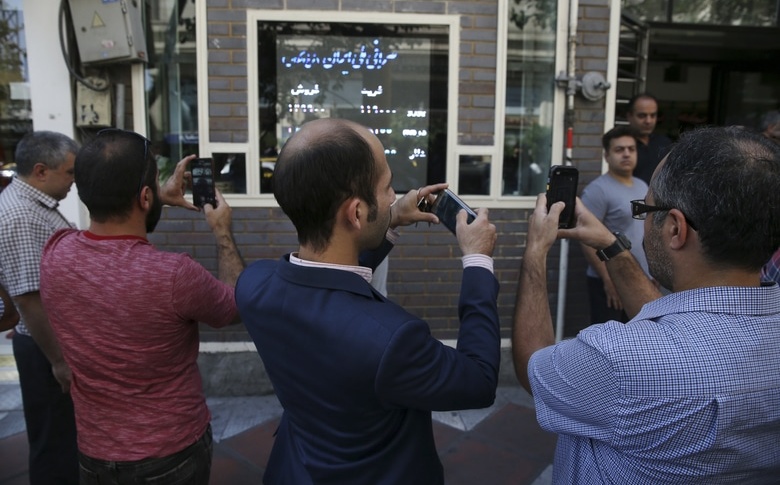Men take pictures of an exchange shop screen with currency rates, Tehran, October 2, 2018 (Vahid Salemi/AP)
Iran’s currency has matched its historic low point, as the country struggles with serious economic problems.
The rial stands at 180,300:1 v. the US dollar, falling back to its level of September 2018, just before the Trump Administration imposed comprehensive sanctions on the Islamic Republic.
Intensive Government intervention propped up the rial, which had been at about 150,000:1 for months before dropping again last month.
The slide has renewed because of economic downturn and the Government’s budget difficulties amid crippled oil revenues.
Iran’s oil exports have fallen between 80% and 95%, and income further dented by the low global price. The Coronavirus pandemic, which has officially killed 8,584 Iranians, has limited economic activity.
The Government has reopened businesses since April 11, risking a second wave of the virus. However, the International Monetary Fund projects an 11% fall in Iranian GDP this year, after a 7.6% decline in 2019.
The Economy Minister told Parliament last week that GDP had already contracted 15% during the pandemic.
Central Bank head Abdolnasser Hemmati insisted last month, “The situation is difficult, but the trend is one of improvement which can be managed and stability can be restored.”
The Supreme Leader, who is calling for a “Surge in Production”, has made no comment this month about the situation.
President Hassan Rouhani did not mention the currency issue on Thursday. Instead, he told a ceremony for industrial and mining projects on Thursday, “The enemy [the US] has not been able to stop us and force us to surrender….Today, we are bearing witness to a very good onward movement in the country.”

